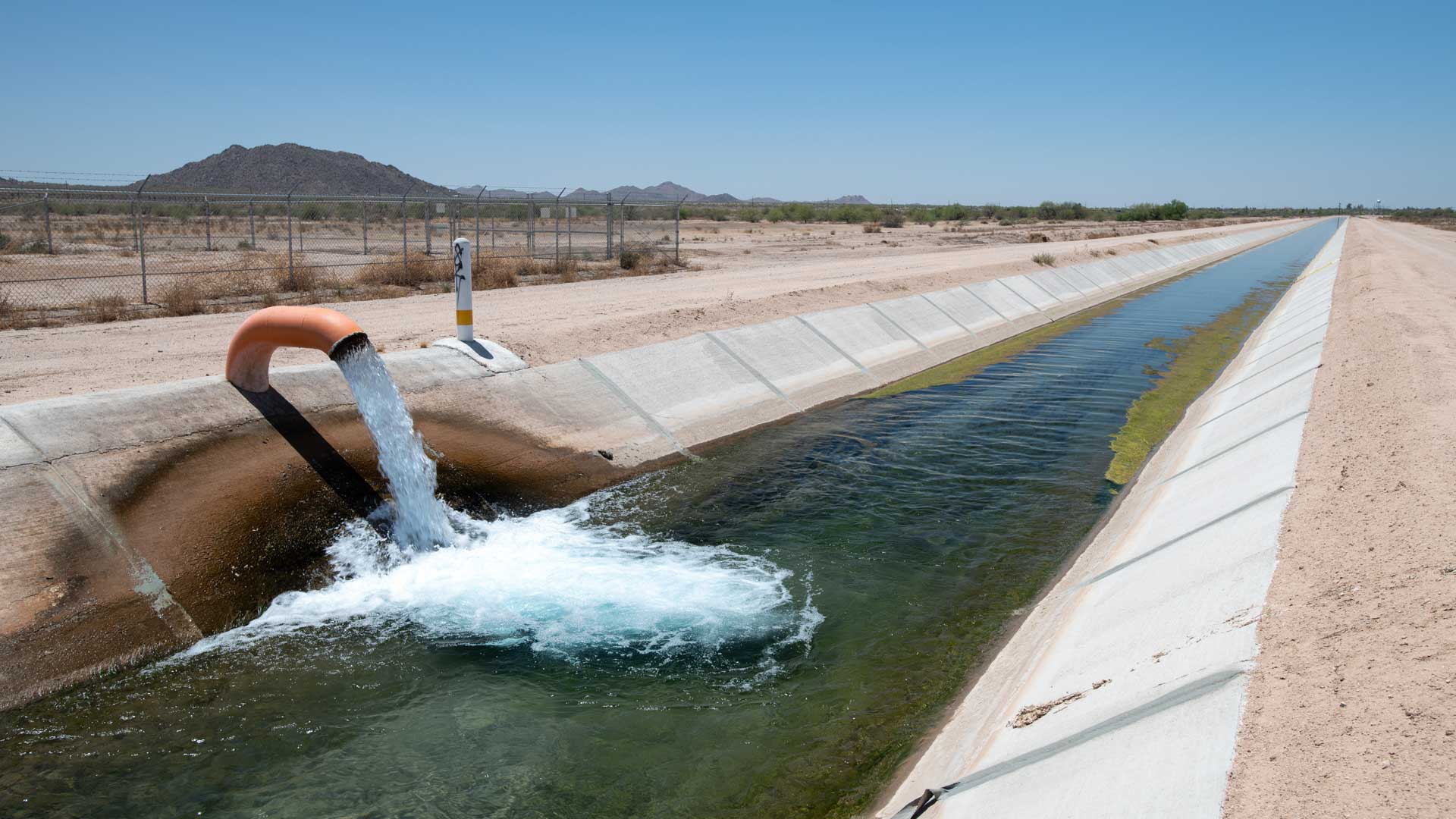 Water enters an irrigation canal on the Gila River Indian Reservation on May 7, 2021. The Gila River Indian Community is among the most important tribal players in ongoing negotiations about using water from the Colorado River.
Water enters an irrigation canal on the Gila River Indian Reservation on May 7, 2021. The Gila River Indian Community is among the most important tribal players in ongoing negotiations about using water from the Colorado River.
The Gila River Indian Community says it does not support a three-state proposal for managing the Colorado River’s shrinking supply in the future. The community, which is located in Arizona, is instead working with the federal government to develop its own proposal for water sharing.
The tribe is among the most prominent of the 30 federally recognized tribes that use the Colorado River. In recent years, it has signed high-profile deals with the federal government to receive big payments in exchange for water conservation. Those deals were celebrated by Arizona’s top water officials. But now, it is diverging from states in the river’s Lower Basin — Arizona, California, and Nevada.
Stephen Roe Lewis, The Gila River Indian Community’s Governor, announced his tribe’s disapproval of the Lower Basin proposal at a water conference in Tucson, Ariz., while speaking to a room of policy experts and water scientists.
“This is not the time to be standing on the sidelines,” Lewis said. “We all have a responsibility to do what we can. And that's why The Community can't support the current Lower Colorado River approach as it stands now.”
The announcement adds a new wrinkle to an already complicated process. Last week, the seven states that use the Colorado River unveiled competing plans for managing its water. The Lower Basin states revealed one, and the Upper Basin states – Colorado, Utah, Wyoming, and New Mexico – revealed another. The opposing plans represent stark ideological differences between the two groups of states, marking the latest disagreement between rival camps that have argued over water management for decades.
Lewis, who has positioned his tribe as an ally to the federal government in helping save water, outlined a few major sticking points that led Gila River to work on its own proposal.
One issue, Lewis said, is that the Lower Basin’s proposal creates an “unfair burden” on the state of Arizona. Under the proposed plan, all seven states would have to cut back on demand for water if levels in the nation’s largest reservoirs — Lake Mead and Lake Powell — drop below a predetermined trigger in the future. Arizona would take the largest of those cutbacks.
Another, he said, is that the Lower Basin’s plan does not explain how it would mitigate the impact of those potential new water cutbacks. Lewis said he would like to see plans to identify new sources of water away from the Colorado River that could replace water lost to cutbacks, or financial compensation.
States are under pressure to agree on plans to manage the river before 2026 when the current guidelines for sharing its water expire. Both of last week’s plans came just ahead of a deadline from the Bureau of Reclamation, the federal agency that manages the West’s dams and reservoirs. The deadline was an effort to get the ball rolling on new river rules with enough time to implement them before a potential change in administration after the upcoming November election.
Reclamation officials said they expect to work with states over the spring and summer and reach a draft for post-2026 river management rules by the end of 2024.
Now, Lewis and his staff are working with Reclamation on what could potentially be a third competing proposal. He said he hopes a proposal will be released in “weeks,” rather than months.
“It's potentially not just the Gila River, because this will affect other tribes as well,” Lewis said. “I wouldn't be surprised if other tribes started to register their concerns as well.”
As states and the federal government draw closer to a new set of river management rules, some tribes have repeatedly expressed frustration about being excluded from negotiations. Tribal communities often lack reliable access to clean water due to aging infrastructure and a history of underinvestment, and many are calling for greater inclusion going forward.
Lewis said that was not the issue in this case, and that the Gila River Indian Community was included in talks.
“We were at the table,” Lewis said. “It’s just the proposal, the finished product as it is right now, doesn't reflect our concerns.”
This story is part of ongoing coverage of the Colorado River, produced by KUNC in Colorado and supported by the Walton Family Foundation. KUNC is solely responsible for its editorial coverage.

By submitting your comments, you hereby give AZPM the right to post your comments and potentially use them in any other form of media operated by this institution.